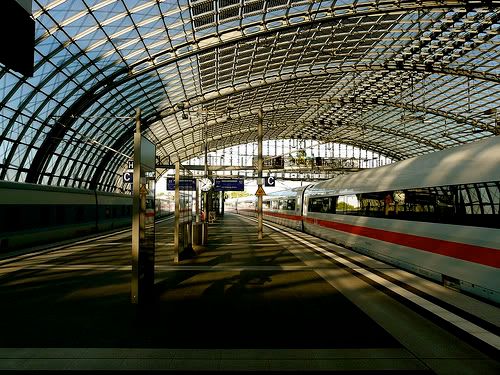Woodbridge_Heights
Senior Member
Covering the tracks and adding a second level of platforms could improve capacity. However with the new concourse being built below the existing one any track going low would have to go VERY low and then we run into things like water tables etc. Mind you other cities have dealt with this so it is just going to take someone with some vistion and cojones to propose it and build it.
One way I think to improve passenger capacity at Union is to extend the (new or current) concourse level under Bay/York sts with full service to the platforms, ticketing and access to the PATH system. You could intercept a whole bunch of people this way.
North Toronto absolutely must be included in any plans to relieve Union. Even if it's just VIA/Amtrak non HSR trains and GO Trains coimg from the far reaches of the system (K-W, Peterborough, Hamilton, Niagara Region) trips like these would not be excessively hampered by moving them from Union to North Toronto as even if they had to complete their trip on the subway it would still be a fraction of their overall trip time. It may also serve to build a daughter station at Dupont.
After that is North Toronto is unable to absorb enough ridership then we have to look at an additional station, but where would we put it? Liberty Village? That is still a way's from the DT core, somewhere in the East? Without a DRL how will riders get DT. Exhibition would seem the best choice, already well served by transit, new LRT routes are on the books and the DRL could stop there as well. The trick with any of those options is to build the station on the existing lines without comprimising the throughput of the lines feeding into Union.
One way I think to improve passenger capacity at Union is to extend the (new or current) concourse level under Bay/York sts with full service to the platforms, ticketing and access to the PATH system. You could intercept a whole bunch of people this way.
North Toronto absolutely must be included in any plans to relieve Union. Even if it's just VIA/Amtrak non HSR trains and GO Trains coimg from the far reaches of the system (K-W, Peterborough, Hamilton, Niagara Region) trips like these would not be excessively hampered by moving them from Union to North Toronto as even if they had to complete their trip on the subway it would still be a fraction of their overall trip time. It may also serve to build a daughter station at Dupont.
After that is North Toronto is unable to absorb enough ridership then we have to look at an additional station, but where would we put it? Liberty Village? That is still a way's from the DT core, somewhere in the East? Without a DRL how will riders get DT. Exhibition would seem the best choice, already well served by transit, new LRT routes are on the books and the DRL could stop there as well. The trick with any of those options is to build the station on the existing lines without comprimising the throughput of the lines feeding into Union.






